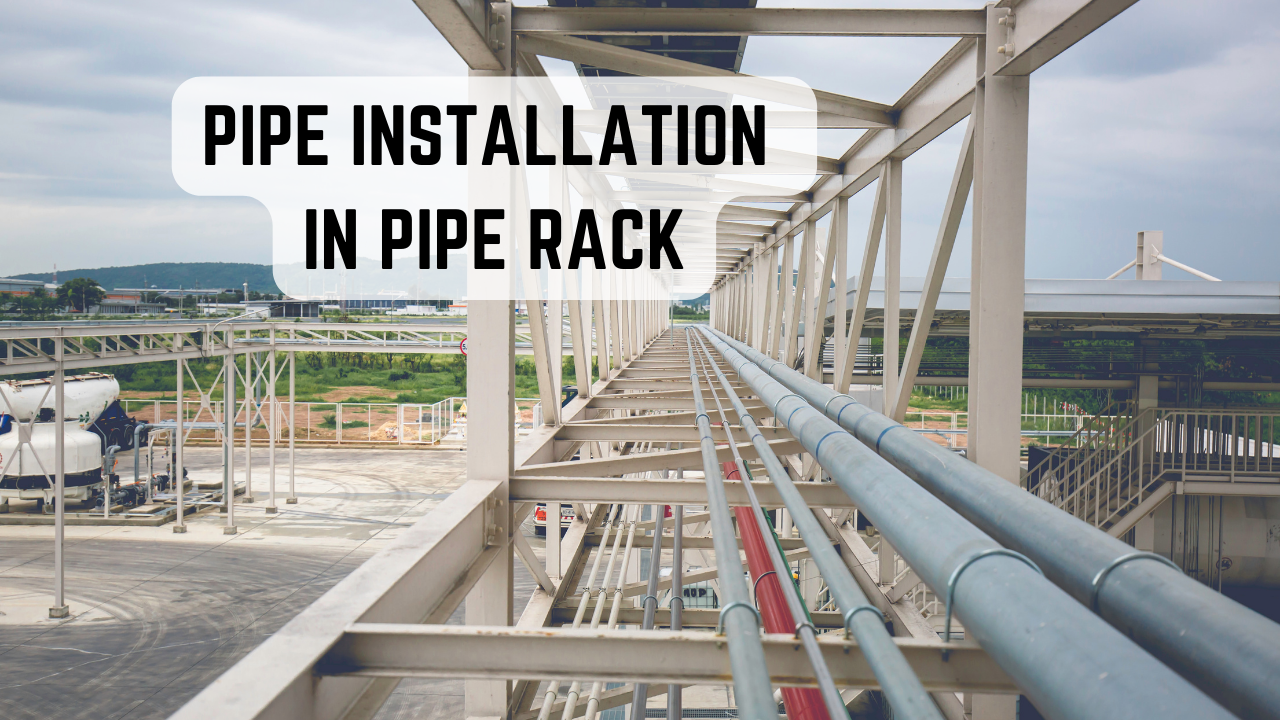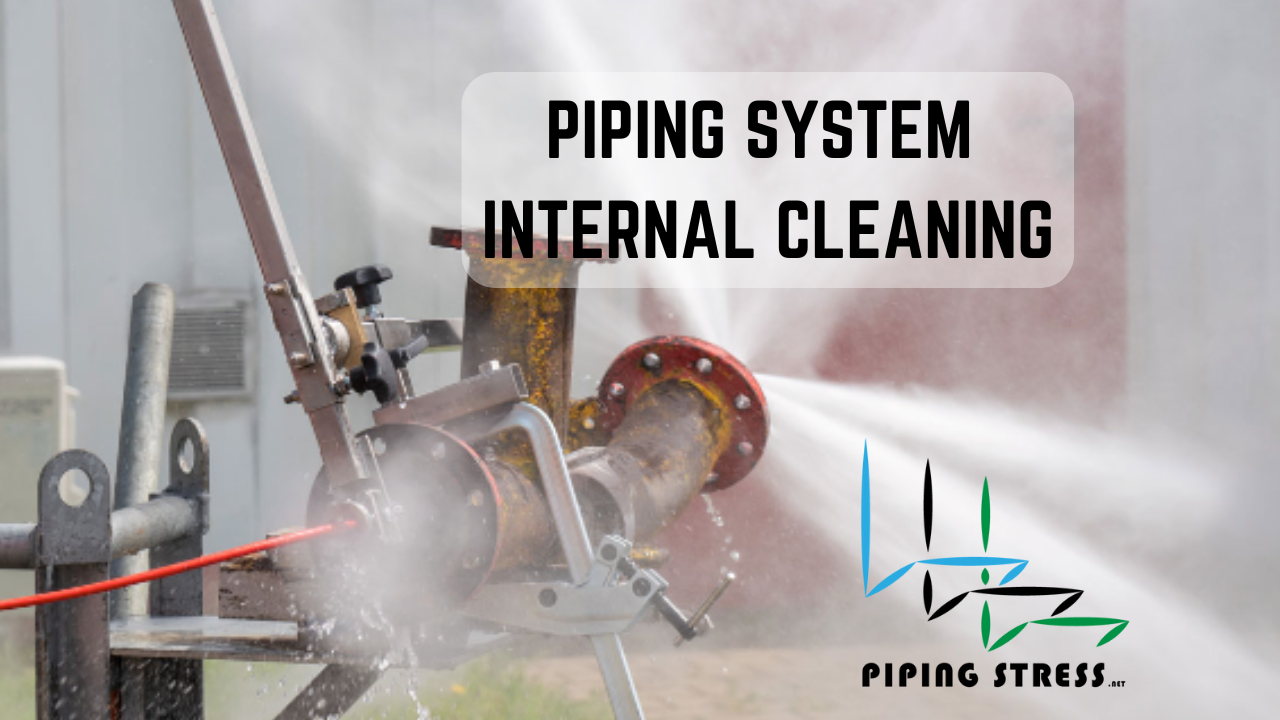Heat Exchanger Piping
Heat exchangers are commonly used equipment in process plants, similar to pumps, storage tanks, and pressure vessels. Proper heat management is crucial in any facility, whether through direct application in a furnace or heat interchange in a shell and tube exchanger. The primary function of a heat exchanger is to maintain heat balance by exchanging heat with outside sources or between streams of different temperatures.
This blog provides a general view of the layout requirements for heat exchangers, proper nozzle orientation, and piping design requirements. The blog identifies the necessary information for plant layout designers to locate, elevate, operate, and maintain the most common exchangers and associated piping and controls. The most common applications of heat exchangers are shown in Figure 1 on a process flow diagram.
Figure-1 Flow Diagram for Exchangers
The most common applications of heat exchangers shown on a process flow diagram.
Figure-3 Shell and Tube Exchanger Passes
Cooler - Cooling process streams involves transferring heat to cooling water, atmosphere, or other media. Check out the blog on air coolers through the link.
Exchanger - Exchanges heat from a hot to a cold process stream.
Reboiler - Boiling processes use steam, hot oil, or a hot process stream to heat liquids in tower bottoms and circulate in the tower.
Heater - Heats a process stream by condensing steam.
Condenser - Condenses vapors by transferring heat to cooling water, atmospheric air, or other media.
Chiller - Cools a process stream to very low temperatures by evaporating a refrigerant.
Exchanger Configuration
The following figure (Figure-2) illustrates the most common heat exchangers used in processing facilities, which are discussed in the subsequent sections.
Figure-2 Exchanger Types
The most common heat exchangers used in processing facilities.
Shell and tube heat exchangers are cylindrical vessels made of steel that contain bundles of parallel tubes. These tubes are arranged in a way that allows for the efficient transfer of heat between two fluids. Liquid flows through the shell while another liquid passes through the interior of the tubes, allowing for heat exchange between the two. The exchanger heads can be designed to allow multiple passes on the tube side. Installing baffles parallel to the tubes allows for multiple passes on the shell side. Baffles can be placed inside the shell at a perpendicular angle to the tubes to direct the liquid towards the tubes. This helps to increase heat recovery by improving the flow path. Multiple passes are used to increase fluid velocity. Figure-3 displays an exchanger with two passes on the tube side and one on the shell side.
The heat exchanger shells are made of seamless pipe for small diameters and shaped welded steel plates for larger sizes. Tube bundle sizes can range from 8 to 96 inches (200mm to 2,400mm) in diameter and from 6 to 50 feet (1,800mm to 15,000mm) in length. The shell ends can accommodate welded, dished, or flanged covers and heads. Both the inlet and outlet nozzles on the tube and shell sides are positioned to provide the required flow through the exchanger. The unit can be installed horizontally with the help of attached saddles or vertically using lugs. Tube bundles are made of many small-diameter tubes that are expanded into tube sheets at both ends of the bundle. One end is fixed while the other is allowed to float to accommodate expansion. In the simpler U-tube arrangement, only one tube sheet is used, which is integrated with the channel head. Figure-4 illustrates a typical shell and tube exchanger, highlighting the key construction items.
Exchangers can be arranged in various combinations using different shells, shell covers, and head covers to provide a wide range of services. Figure-5 illustrates the U-tube, fixed tube, and kettle arrangements.
Figure-4 Typical Shell and Tube Exchanger Items
The heat exchanger shells are made of seamless pipe for small diameters and shaped welded steel plates for larger sizes. Tube bundle sizes can range from 8 to 96 inches (200mm to 2,400mm) in diameter and from 6 to 50 feet (1,800mm to 15,000mm) in length. The shell ends can accommodate welded, dished, or flanged covers and heads. Both the inlet and outlet nozzles on the tube and shell sides are positioned to provide the required flow through the exchanger. The unit can be installed horizontally with the help of attached saddles or vertically using lugs. Tube bundles are made of many small-diameter tubes that are expanded into tube sheets at both ends of the bundle. One end is fixed while the other is allowed to float to accommodate expansion. In the simpler U-tube arrangement, only one tube sheet is used, which is integrated with the channel head. Figure-4 illustrates a typical shell and tube exchanger, highlighting the key construction items.
Exchangers can be arranged in various combinations using different shells, shell covers, and head covers to provide a wide range of services. Figure-5 illustrates the U-tube, fixed tube, and kettle arrangements.
Figure-5 Various Type of Heat Exchangers
Exchangers can be arranged in various combinations using different shells, shell covers, and head covers to provide a wide range of services. This figure illustrates the U-tube, fixed tube, and kettle arrangements.
Plate Heat Exchanger
Plate exchangers, used for low-pressure and low-temperature applications, consist of end covers, carrying bars, inlet and outlet nozzles, plates, and gaskets. The plates have spaces for liquid flow and ports for inlet and outlet of hot and cold liquids that form four distribution headers when aligned. The gaskets direct liquid flow distribution and facilitate the distribution of hot and cold liquids to alternate plate flow channels. Top and bottom carrying bars and slots ensure alignment, while bolts compress the plate pack and gaskets.
Figure-6 Plate Heat Exchanger
Plate exchangers, used for low-pressure and low-temperature applications, consist of end covers, carrying bars, inlet and outlet nozzles, plates, and gaskets.
Spiral Heat Exchanger
Spiral heat exchangers are circular and consist of two long strips of plates wrapped around each other to create a pair of concentric spiral passages. The liquid flows through continuous channels in the passages. The exchanger has removable covers on each side for access to the spiral plate. The inlet and outlet nozzles are an integral part of the plate housing and the covers. The unit is supported by legs attached to the plate housing for horizontal installations and lugs for vertical installations. It is compact and requires less installation and servicing space than conventional exchangers of equivalent surface.
Figure-7 Spiral Heat Exchanger
Spiral heat exchangers are circular and consist of two long strips of plates wrapped around each other to create a pair of concentric spiral passages.
Double Pipe Heat Exchanger (Fin-Tube Heat Exchanger)
The double pipe exchanger, or fin-tube exchanger, is used when one liquid has greater resistance to heat flow than another, or when surface area is limited. Fins are added to the inner pipe to even out the resistance to the heat flow of the two liquids. It consists of a pipe within a pipe with fins on the inner pipe, and the outer pipe acts as the shell. The shell nozzles are mounted vertically from the outer pipe, and the tube nozzles are directly welded to the inner pipe ends. The units are supported horizontally by brackets attached to a foundation or to the side of other equipment supports.
Figure-8 Double Pipe Heat Exchanger
The double pipe exchanger, or fin-tube exchanger, is used when one liquid has greater resistance to heat flow than another, or when surface area is limited.
Exchanger Location and Support
The diagram in Figure-10 illustrates a typical plot plan featuring several heat exchanger applications. For horizontal shell and tube exchangers, it is recommended to position the channel end facing the auxiliary road or maintenance access way, to allow for tube bundle removal. Sufficient space should be provided at the front end of the exchanger for bonnet removal, as depicted in Figure-11.
Figure-10 Exchanger Location in a Plant
Whatever it is, the way you tell your story online can make all the difference.
Figure-11 Tube Bundle Removal Zone
Whatever it is, the way you tell your story online can make all the difference.
Exchangers can be installed as a single unit, in pairs (which is the most common installation), or in larger groups when no intermediate control is necessary between the shell and tube streams. Figure-12 shows examples of single and paired installations. Paired exchangers can be used in series, parallel, or dissimilar services. In contrast, grouped exchangers are limited to series or parallel operation. Figure-13 illustrates parallel and series exchanger installations.
Figure-12 Paired Exchangers
Exchangers can be installed as a single unit, in pairs (which is the most common installation), or in larger groups when no intermediate control is necessary between the shell and tube streams.
Figure-13 Series Connected Exchangers
Paired exchangers can be used in series, parallel, or dissimilar services.
If you are considering a paired or grouped exchanger installation, make sure to space them out enough to allow a minimum of 2' 6" (750 mm) between the outside of adjacent channel or bonnet flanges. This spacing will facilitate access to flange bolts for maintenance purposes. Additionally, space should be provided on either side of paired exchangers and both ends of grouped exchangers for control and operator access. Figure-14 shows a structure-mounted installation and its required access areas.
Horizontal heat exchangers can be stacked up to a maximum height of 12 feet (3,600 mm) from the ground or platform, as shown in Figure-15. If you want to stack exchangers above this height, you may need to build a platform for easy access to the channel and bonnet flanges, as well as fixed handling devices.
Figure-14 Heat Exchanger on a Structure
Figure-15 Double Stacked Heat Exchanger
Horizontal heat exchangers can be stacked up to a maximum height of 12 feet (3,600 mm) from the ground or platform
When process requirements or space availability dictate, horizontal shell and tube exchangers may be located either at grade or elevated in steel or concrete structures. Support for horizontal exchangers, as shown in Figure-16, is provided by saddles attached to concrete piers for grade-mounted installations and by saddles attached to steel frames in elevated installations. Where possible, supports should be in line to facilitate common foundation design.
Figure-16 Pipe Support for Horizontal Exchangers
Support provided by saddles attached to concrete piers for grade-mounted installations and by saddles attached to steel frames in elevated installations.
Exchanger Piping
When routing exchanger piping, it is essential to consider various factors such as economy, flexibility, support, operation, and maintenance access requirements. To ensure adequate space for the removal of channel heads and shell covers, piping at the shell and tube exchangers should be positioned accordingly.
Clear Zone for Maintenance
Clear Zone for Maintenance
It is also recommended to use the free space at the side of horizontal shells for the placement of controls.
Piping should be elevated a minimum distance from the grade or platform to provide operator headroom clearances, offer ease of support, and meet designated pipe rack elevations.
Heat Exchanger Piping Valve Location
Heat Exchanger Piping Valve Location
Heat Exchanger Piping Valve Location
It is important to know that, piping connected to tube side channel head nozzles should have break flanges to facilitate the removal of the channel head.
Break-Out Flange Locations


























Non-Destructive Examination (NDE) plays a crucial role in ensuring the integrity of welded pipe joints. The selection of NDE methods depends on material type, pipe thickness, and applicable American codes such as ASME B31.3, ASME Section V, and API 1104.